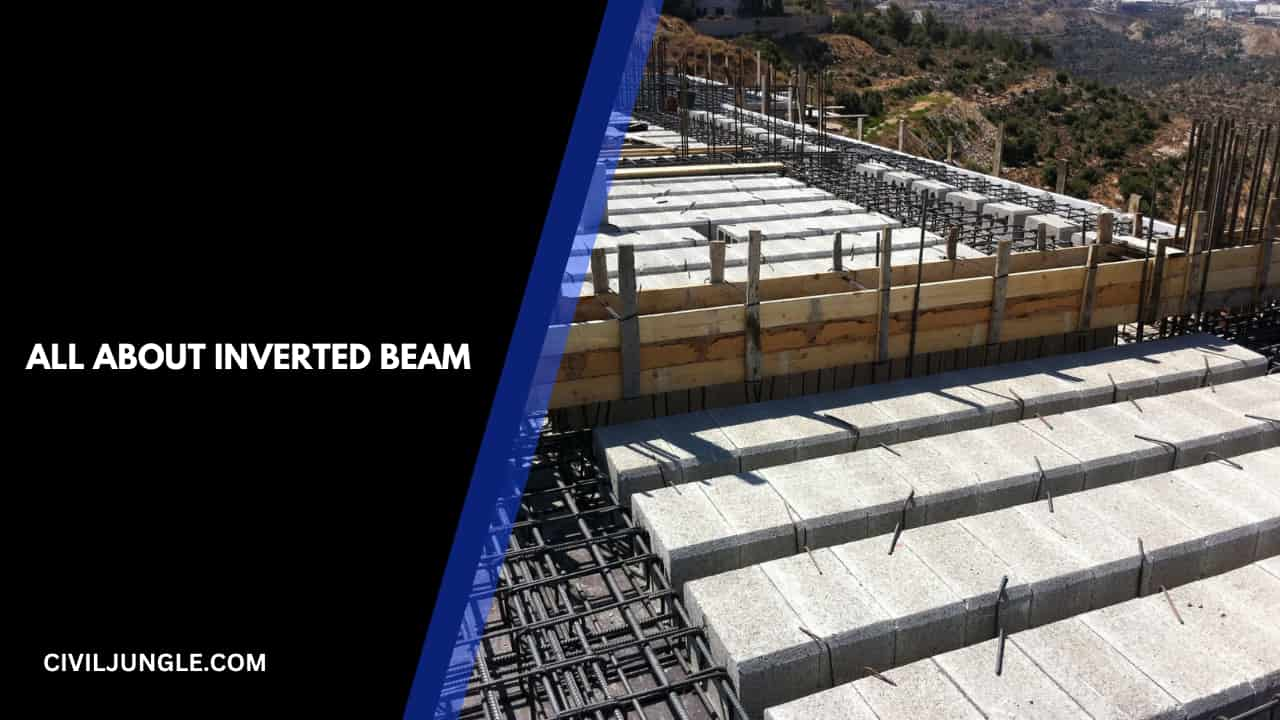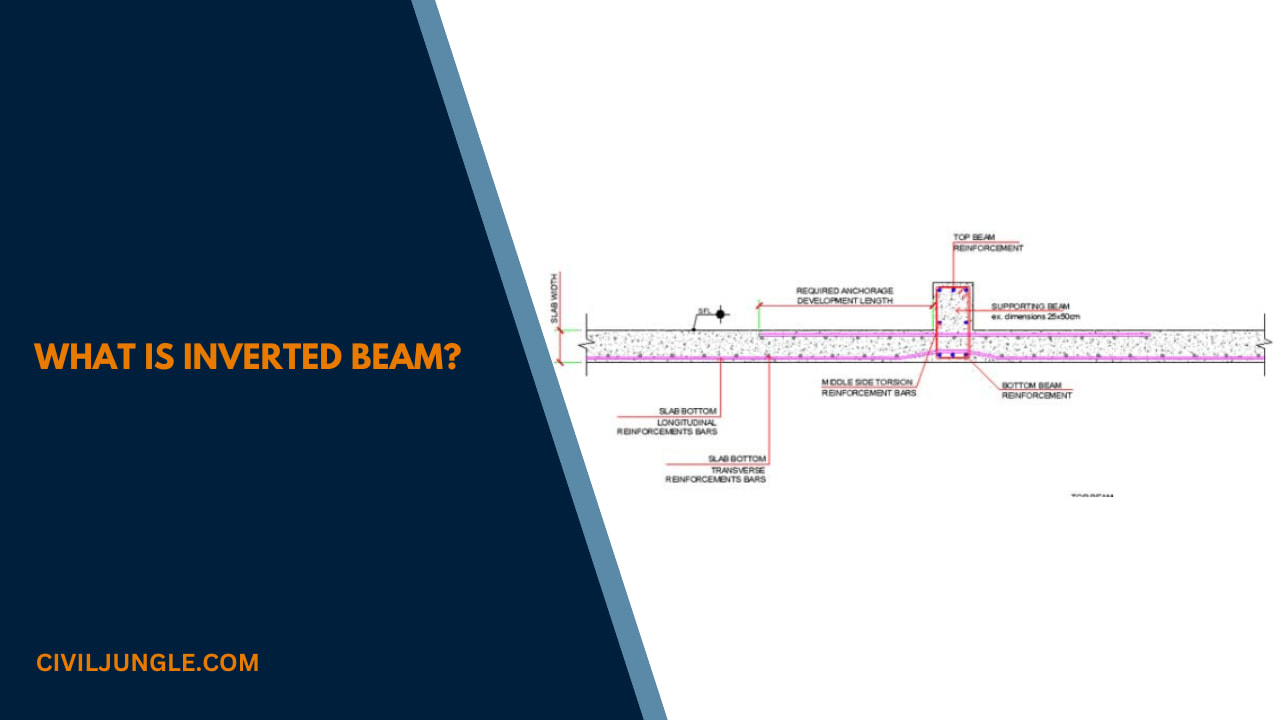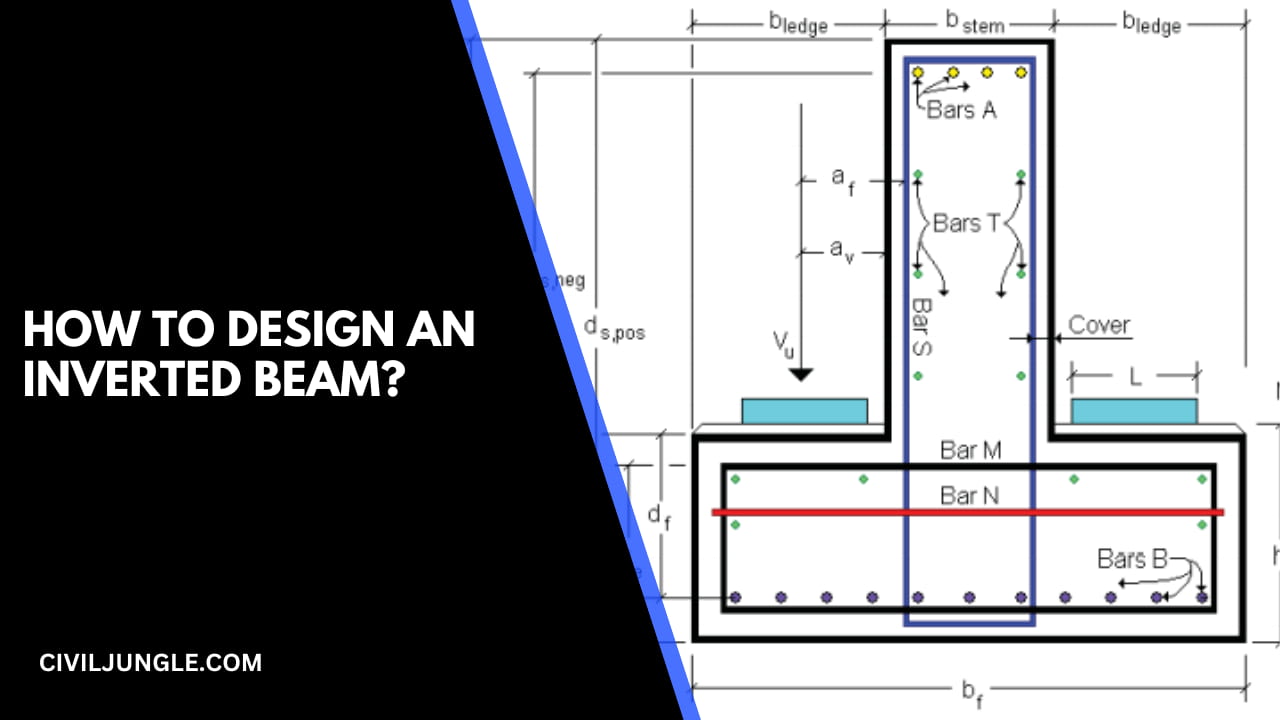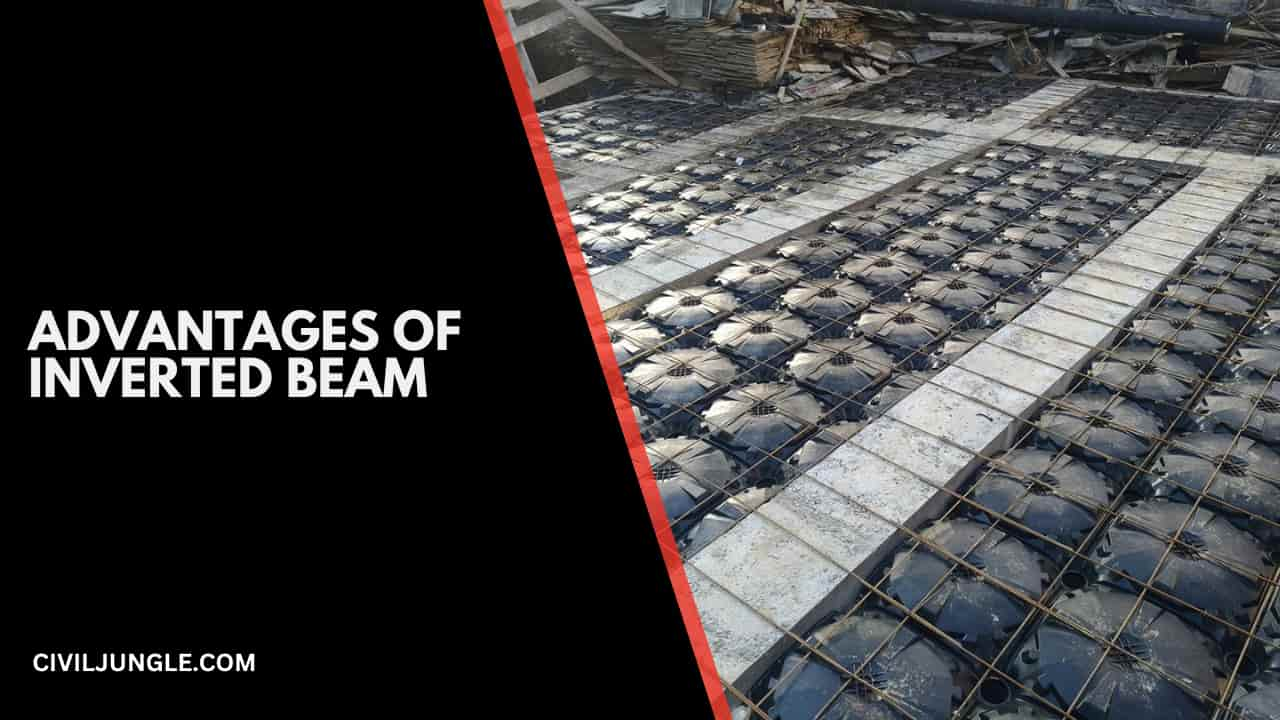What Is Inverted Beam?
Important Point
The Inverted beam is a reinforced concrete beam, different types shape of beam-like I beam, T Beam, L beam, etc.
So, the height of the Inverted beam is the same as the normal height of a beam, as may be noticed in as per below fig.
Inverted beams are popular and form an essential part of modern reinforced concrete framed structures.
Lastly, strict and rigid architectural considerations led to the provision of inverted beams. In this manner, the load which could be brick wall will be dealt with, and the height of the floor won’t be compromised.
In this article, different aspects of reinforced concrete Inverted beams will be discussed.
or
Inverted beams are the same as upstanding beams. As already mentioned in some answers, it is used for headroom clearance.
Bottom line is, wherever there is a restriction on maintaining a certain level of beams due to reasons like aesthetics/maintenance purpose, we increase the level of beams.
Technically speaking it is not the same as putting higher reinforcement on top of having a flexural tension at the top and so I personally don’t prefer to call it an inverted beam, and rather calling it an upstanding beam should be better.
Also, read: How to Building Construction Process Step by Step
Why Is Inverted Beam Used?
The concept of an Inverted beam originated from a flat slab concept. Inverted Beams only means to spread the concentrated load of the beam on the slab area.
Where Did It Use in Buildings?
Inverted beams are usually inserted over the slab where the slab flat is considerable.
The inverted beam is provided slab bottom level to an above slab. It provided as the main beam. This gives a neat and level ceiling surface that’s good for the look.
Also, read: Building
How to Design an Inverted Beam?
The design of a hidden beam is the same as a conventional beam, but its depth is restricted and shouldn’t be greater slab thickness.
Therefore, it might be required to increase the reinforcement ration and width of the beam to overcome this restriction to a certain degree.
Also, read: What Is Development length | What Is Development Length of Bars
Purpose of Inverted Beam
- It’s used to help disperse loads imposed on the slab
- It allows using of a greater span for the slab
- Inverted beams are provided exclusively for architectural aesthetic purposes in the building interior
- To break a wide panel of a slab into considerable size.
- To improve architectural aesthetic appearance by providing neat and leveled ceiling bottom surface
- It saves floor height clearance.
- It allows if brickwork needs to be constructed over the slab.
Also, read: IS 516:1959 Most Important Point (Method of Tests For Strength of Concrete)
Advantages of Inverted Beam
The inverted beam is desired structural element because of several advantages which include:
By providing inverted beam floor height can be achieved, clears the way for electromechanical duct work, and also the aesthetic appearance of the building.
This is more applicable to industrial, commercial buildings.
Inverted Beam
Inverted beams a. Regular beam itself becomes an inverted beam if the flange of the slab gets supported in the tension zone of the beam if it is simply supported beam or in the compression zone of the cantilever beam.
Inverted T Beam
Inverted T–Beams are prestressed concrete elements that have a constant cross section. They are manufactured using high tensile strength prestressed wires or single wire which are embedded within the element. Prestressed beams have many uses in floor construction.
Advantages of Inverted Beam
Used to disperse loads imposed on the slab. Allows use of greater span for the slab. Supports architectural aesthetic purposes in the interior of the building. Improve the architectural aesthetic appearance by providing a surface under the roof that is elegant and levelled.
Inverted Beam Vs Regular Beam
The inverted beam design is similar to the regular beam, but its depth is restricted and should not be too higher than slab thickness.
Inverted Beam Construction Methods
Inverted beams are usually inserted into the slab at a substantial point where the slab is flat. The dispersed beam is provided up to the slab above the lower level of the slab. It was given as the main beam. It provides an elegant and even ceiling surface, which is good for appearance.
Inverted Beam Advantages and Disadvantages
The main advantage of an ‘inverted beam’ is the architecture, which does not have a visible beam drop and therefore provides a seamless slab ceiling. Floor – ceiling height clearance. 2. The main drawback of an inverted beam is pouring of concrete will take two-stage, (1.
Inverted Beam Reinforcement Details
In structural engineering, an inverted beam refers to a beam that is cast upside down or inverted compared to a traditional beam. Inverted beams are commonly used in various construction scenarios, such as to accommodate clear floor space, create architectural features, or provide a higher ceiling height.
Inverted Beam Means
inverted beams refer only to the disperse of the concentrated load of the beam on the slab area. Inverted beams are usually inserted into the slab at a substantial point where the slab is flat. The dispersed beam is provided up to the slab above the lower level of the slab. It was given as the main beam.
Inverted Beam Disadvantages
The main drawback of an inverted beam is pouring of concrete will take two-stage, (1. Slab 2. Inverted beam) which significantly affects the ability to resist stress.
What Is Inverted Beam?
An inverted beam concept is obtained from a flat slab concept. inverted beams refer only to the disperse of the concentrated load of the beam on the slab area.
Why Inverted Beam Is Provided?
Used to disperse loads imposed on the slab. Allows use of greater span for the slab.
What Is Inverted Beam in Construction?
Inverted beams is same like regular beams. When the slab is placed so that the bottom surface of the beam and the slab are at the same level, it gives an inverted T shape junction. Hence, it is called the inverted beam.
Advantages of Inverted Beam in Building Design
Improve the architectural aesthetic appearance by providing a surface under the roof that is elegant and levelled. The main advantage of an ‘inverted beam’ is the architecture, which does not have a visible beam drop and therefore provides a seamless slab ceiling. Floor – ceiling height clearance.
Inverted Beam Vs Conventional Beam
In a conventional beam-slab system, the slab rests on the beam. The slab for some portion of its width, acts as a compression flange for the beam. In an inverted beam, the slab is underslung from the beam, and being on the tension face, cannot be taken advantage of as a compression flange.
Inverted Beam Design Considerations
The inverted beam design is similar to the regular beam, but its depth is restricted and should not be too higher than slab thickness. Therefore, to overcome this barrier to a certain extent, it is necessary to increase the reinforcement ratio and the width of the beam.
Like this post? Share it with your friends!
Suggested Read –
- Testing for Silt Content in Sand
- 10 Best Cement Companies In India
- What Is SBC of Soil? | Safe Bearing Capacity of Soil
- What Is Camber in Road | Types of Camber | Advantages of Camber in Road
- What Is Unit Weight | What Is Density | What Is Unit Weight Material | Unit Weight Building Materials
- Abrasion Test | Test to Determine the Abrasion Value | Abrasion Test Principle | Important of Abrasion Test
- Density of Cement Sand and Aggregate | Cement Density | Sand Density | Aggregate Density | list of Density







Hey,
I have a question related for my Architectural Thesis project i.e., Institute for Performing Arts.
If I have to provide floor isolation on the first floor, the slab is to be raised. So, can I provide an Inverted {upstanding) beam for that purpose?
Can it bear that kind of load? (All the instruments playing, etc.)
Yes, Inverted beam load-carrying capacity same as the normal beam.
Can the Inverted beam be rested on the Drop beam?
Is there any possibility?
What is the difference in normal and inverted beams reinforcement, I mean is there any changes in placing the extra rods
Can I pour concrete Separately in slab and inverted beam , is this method effect the structural integrity